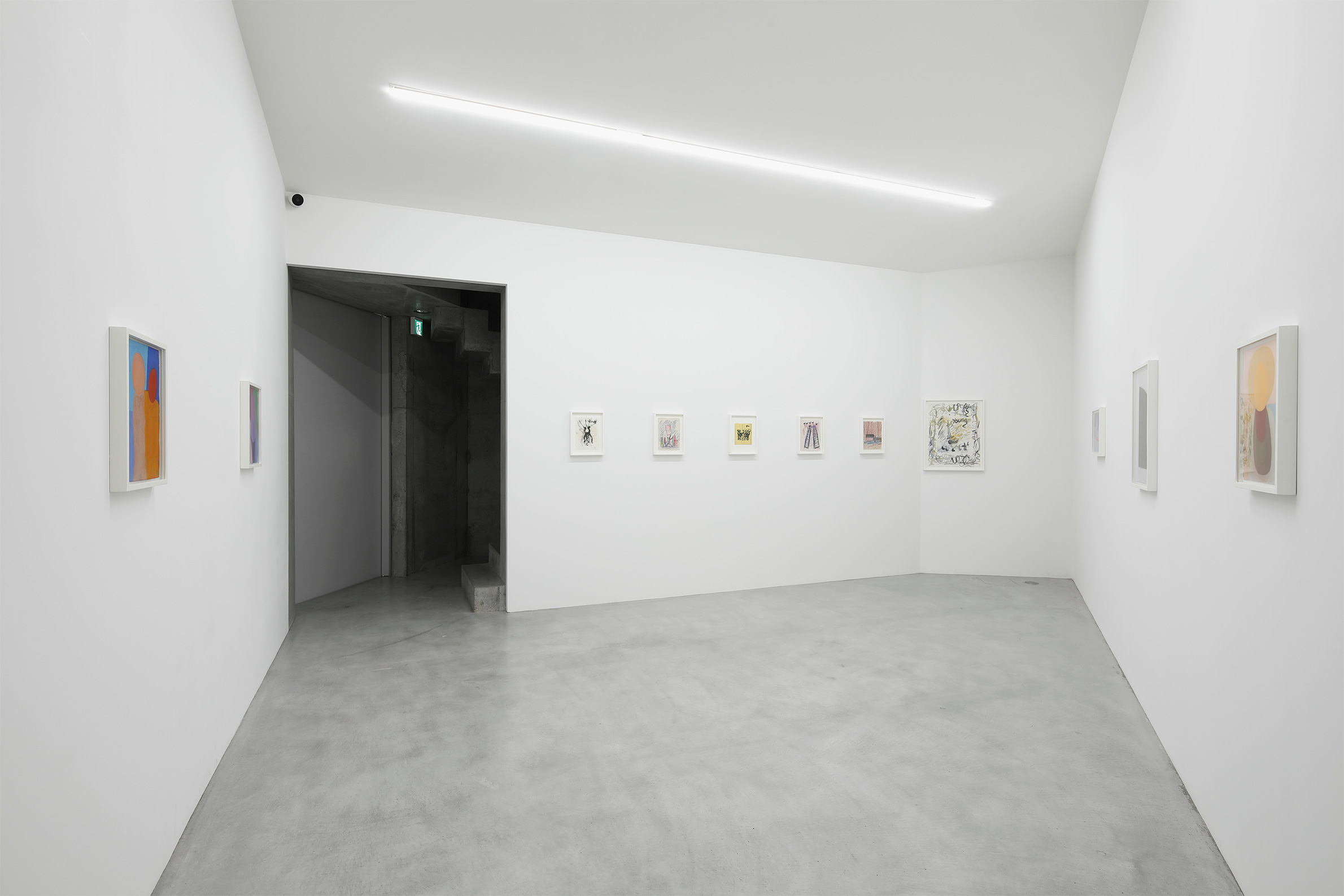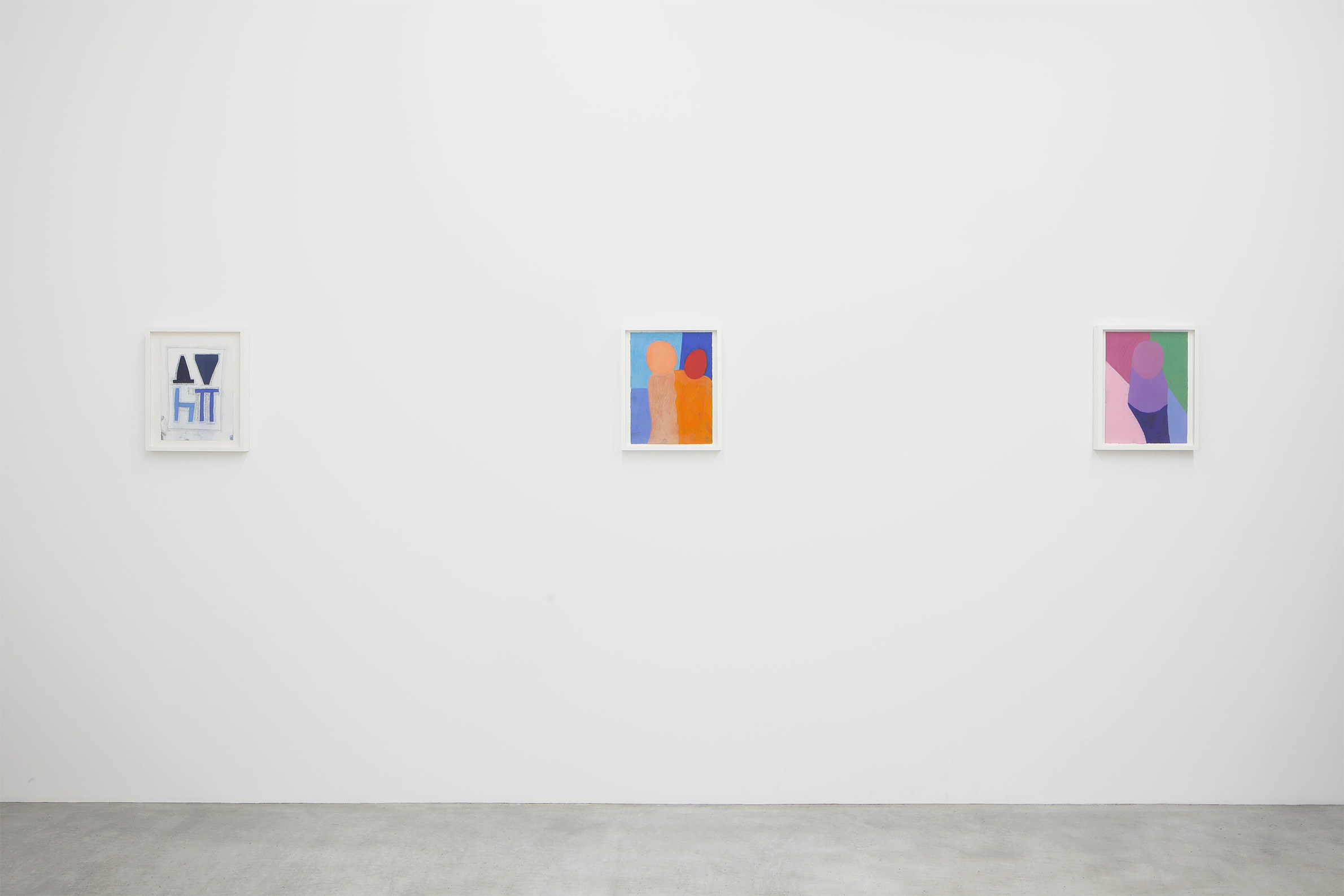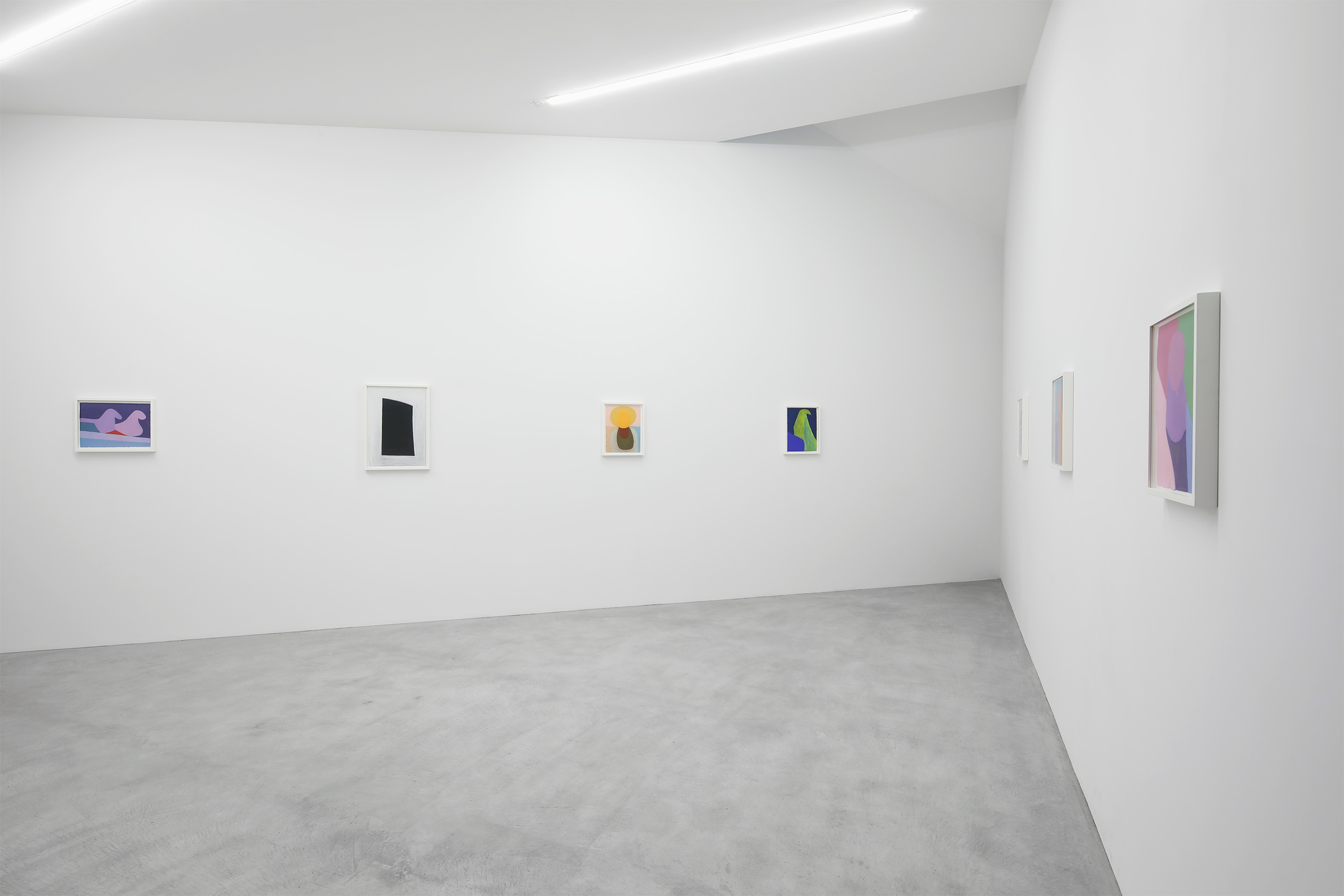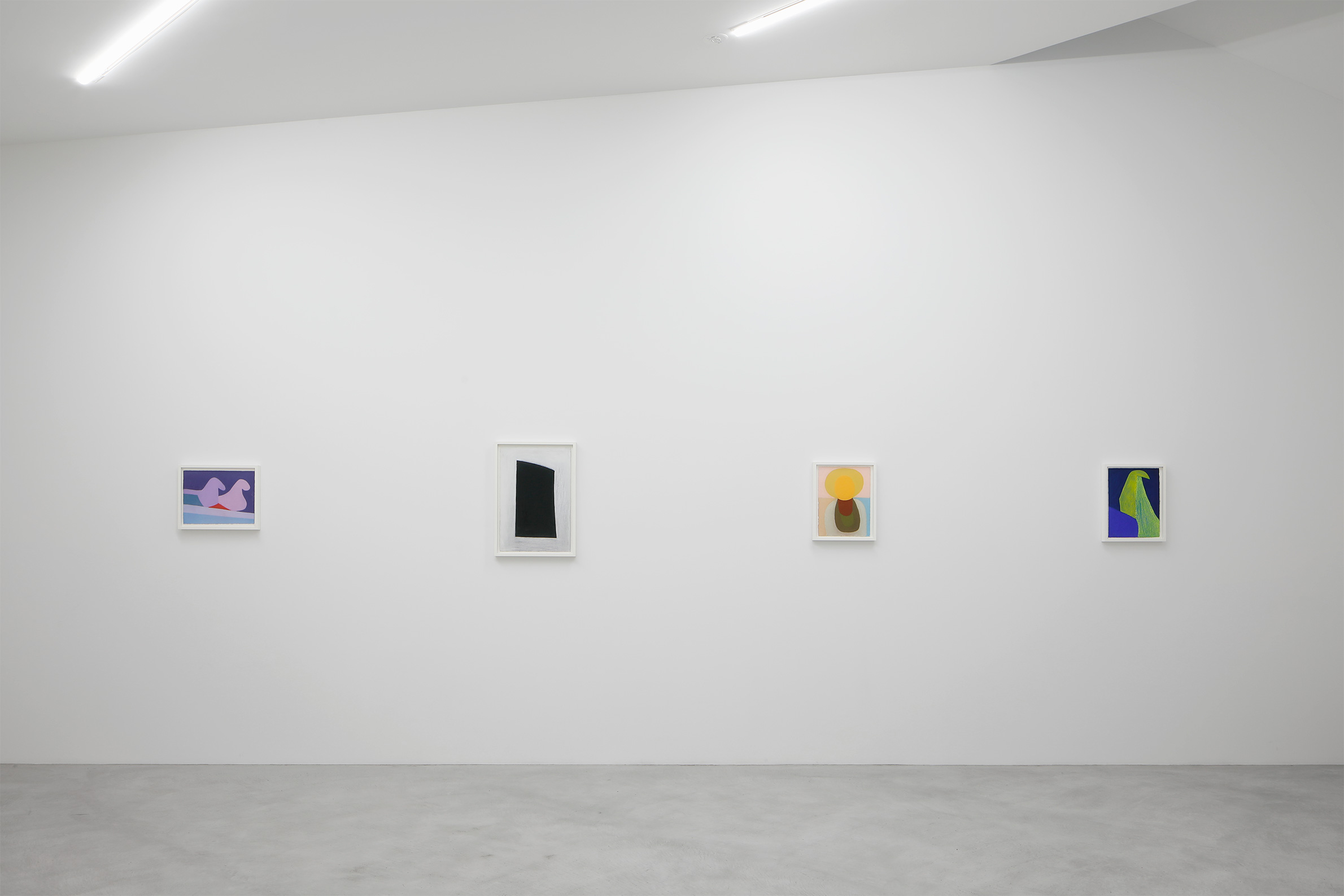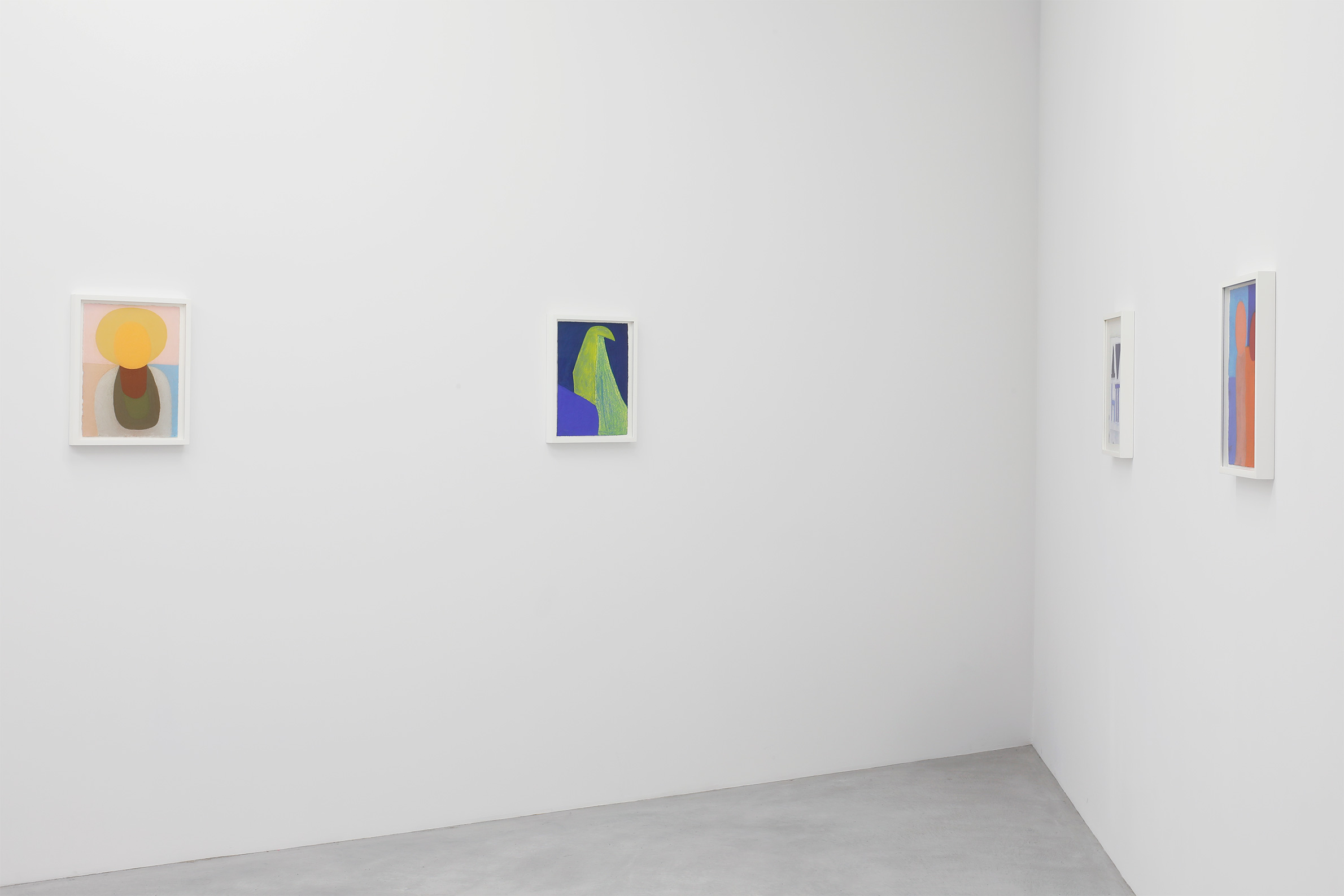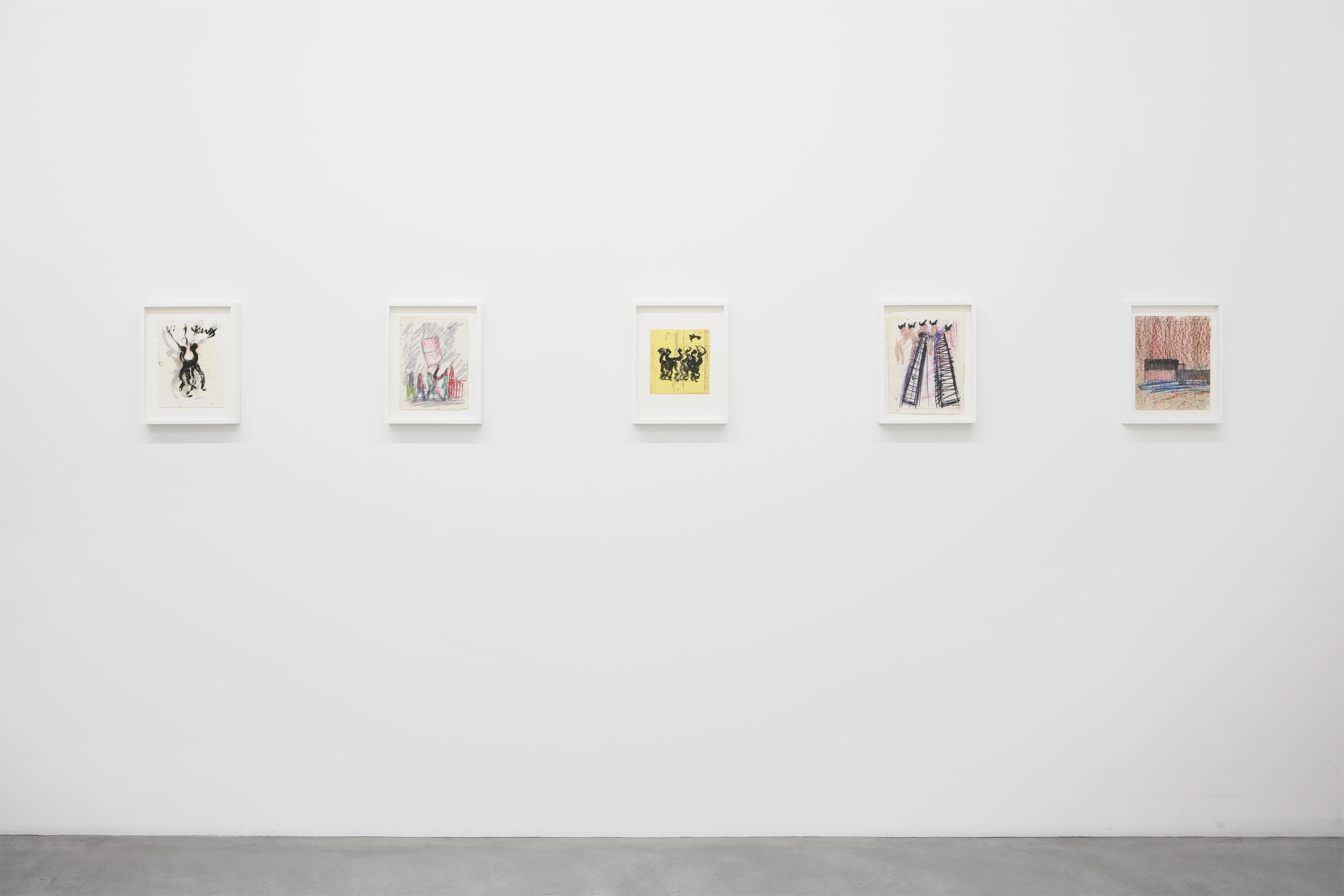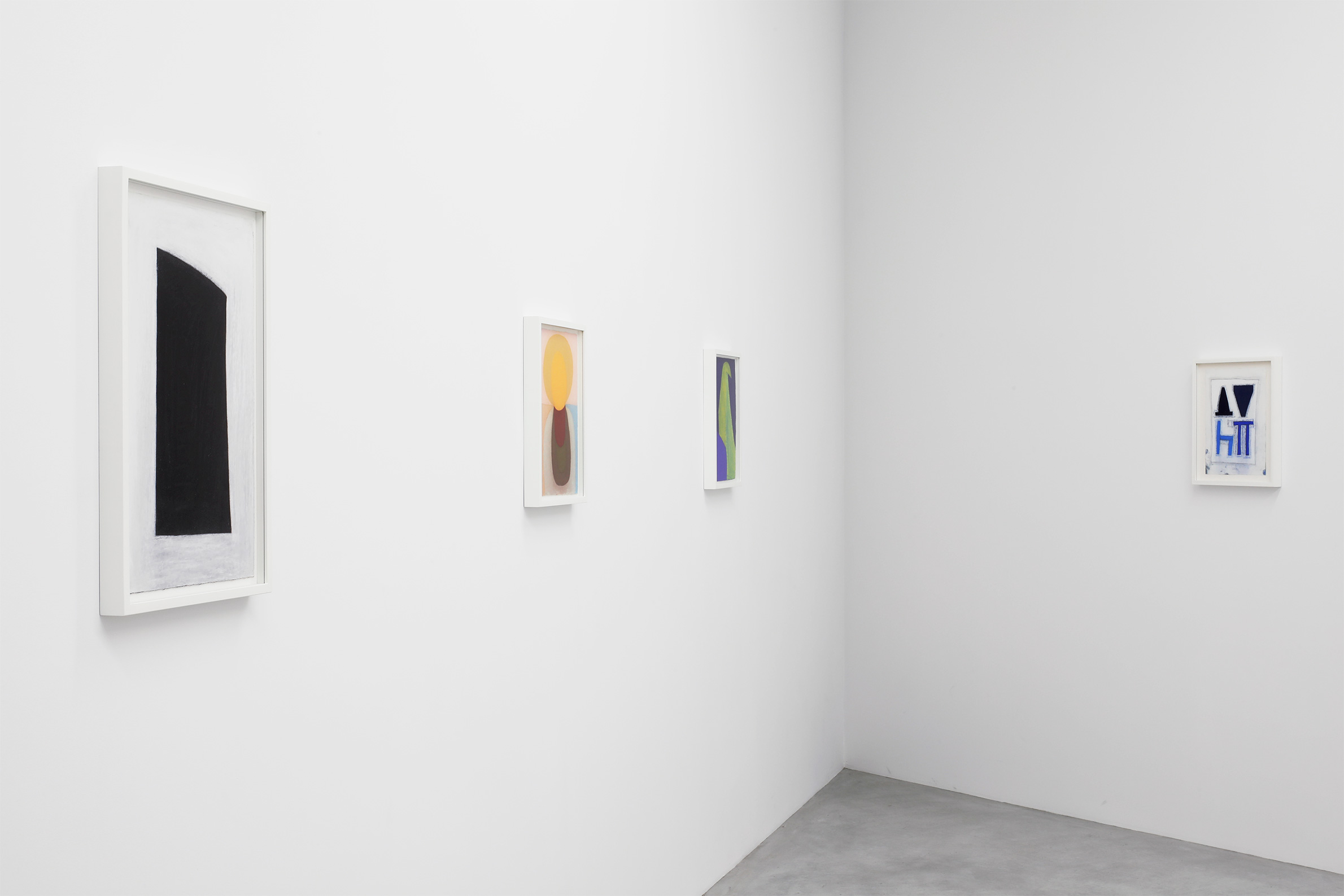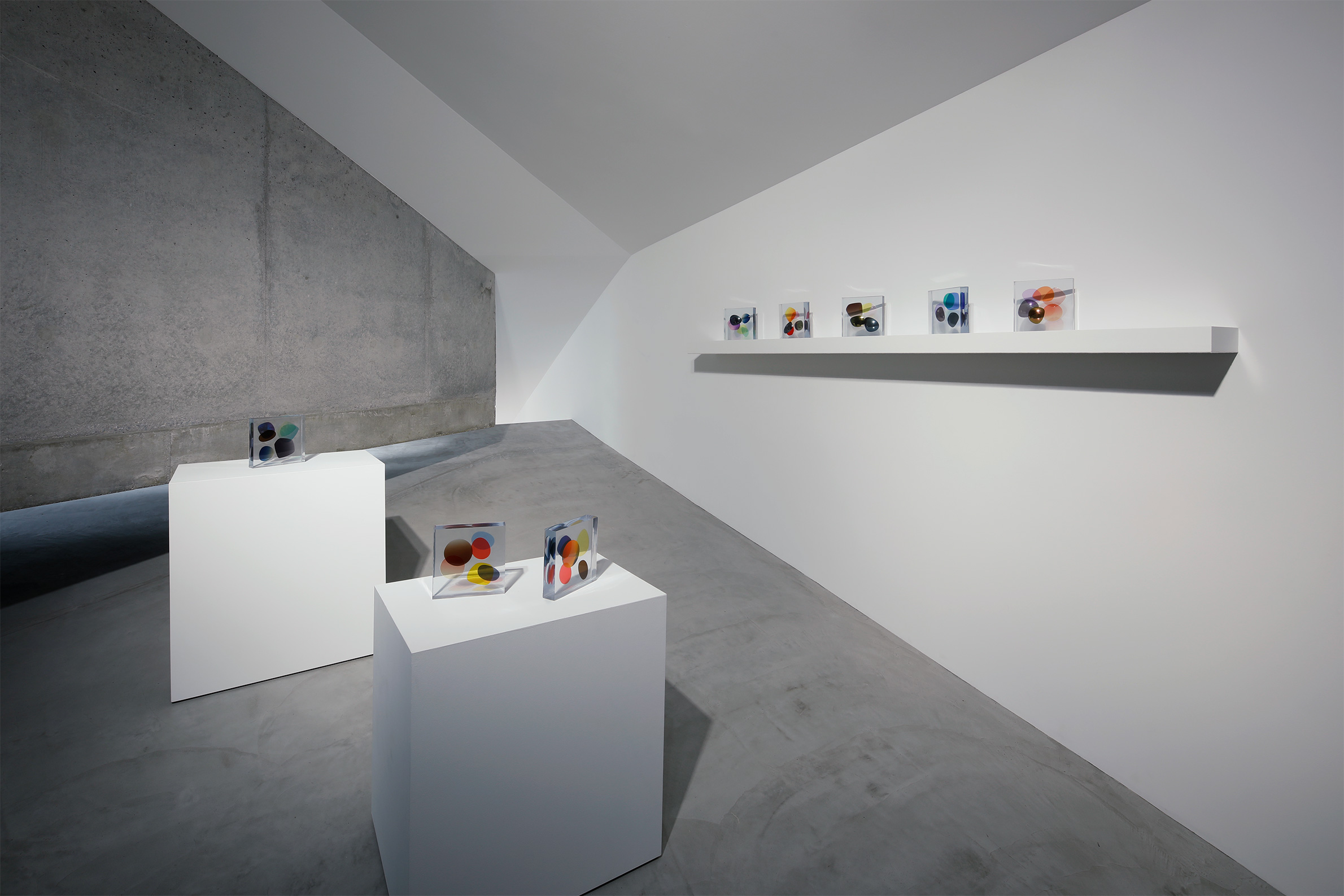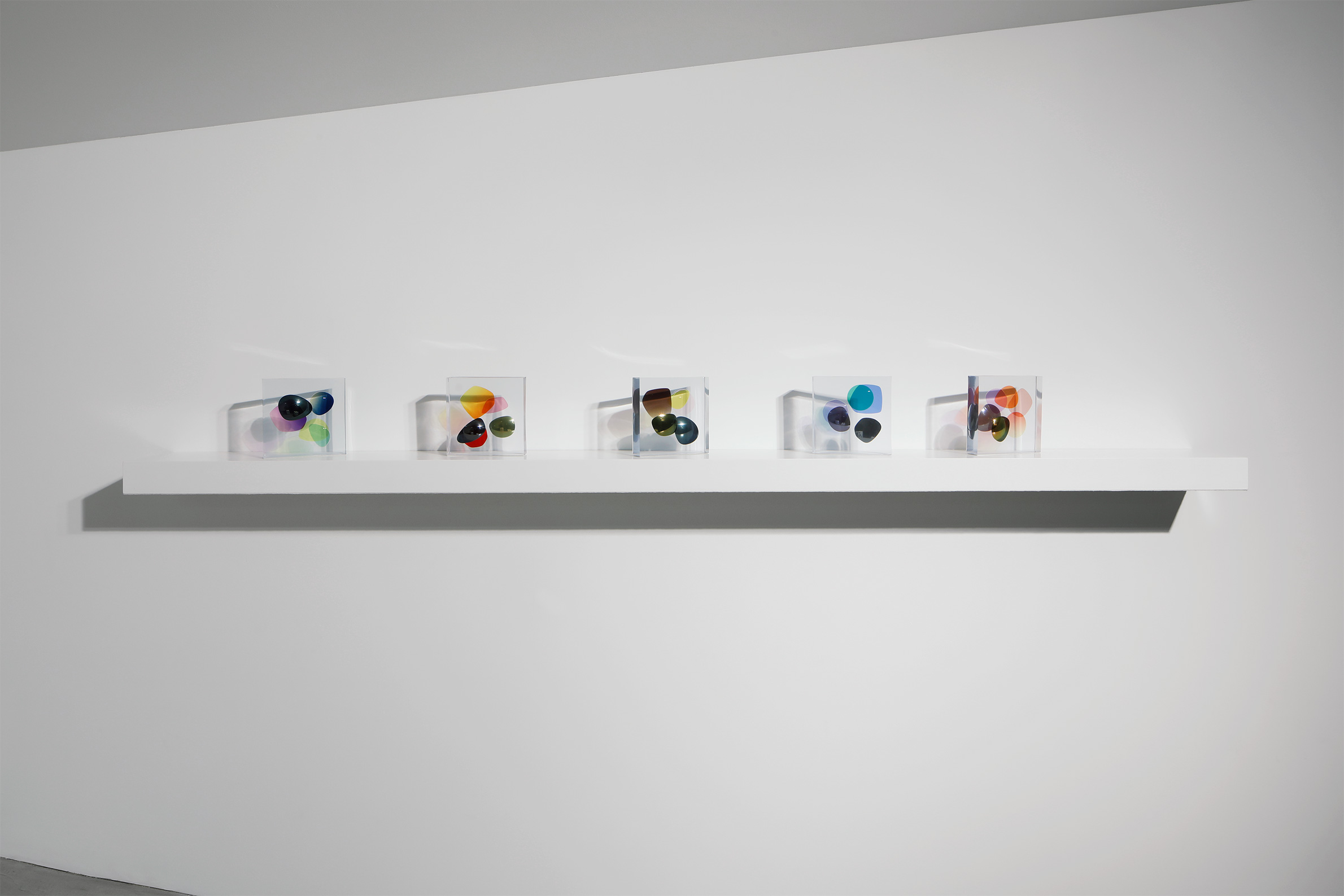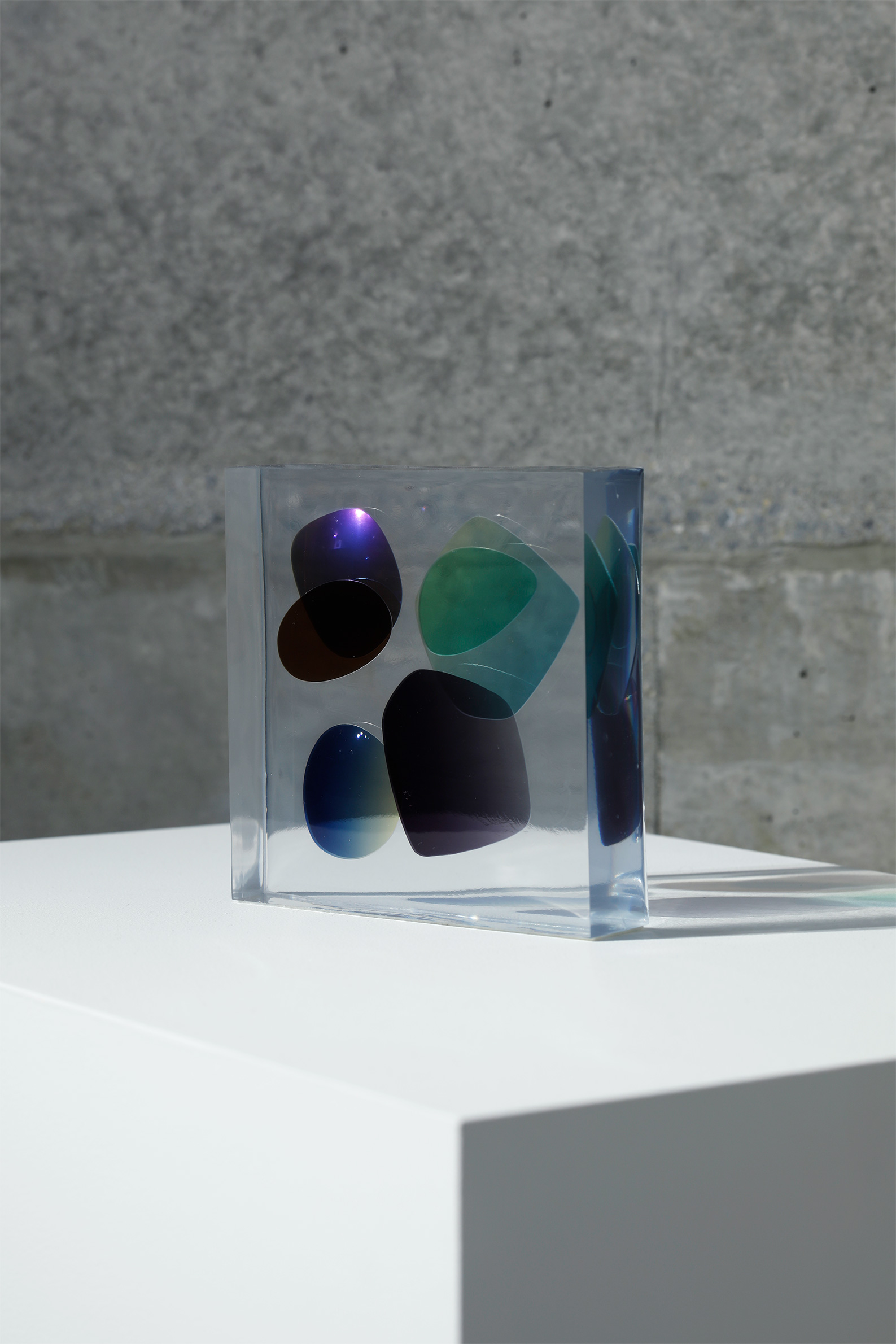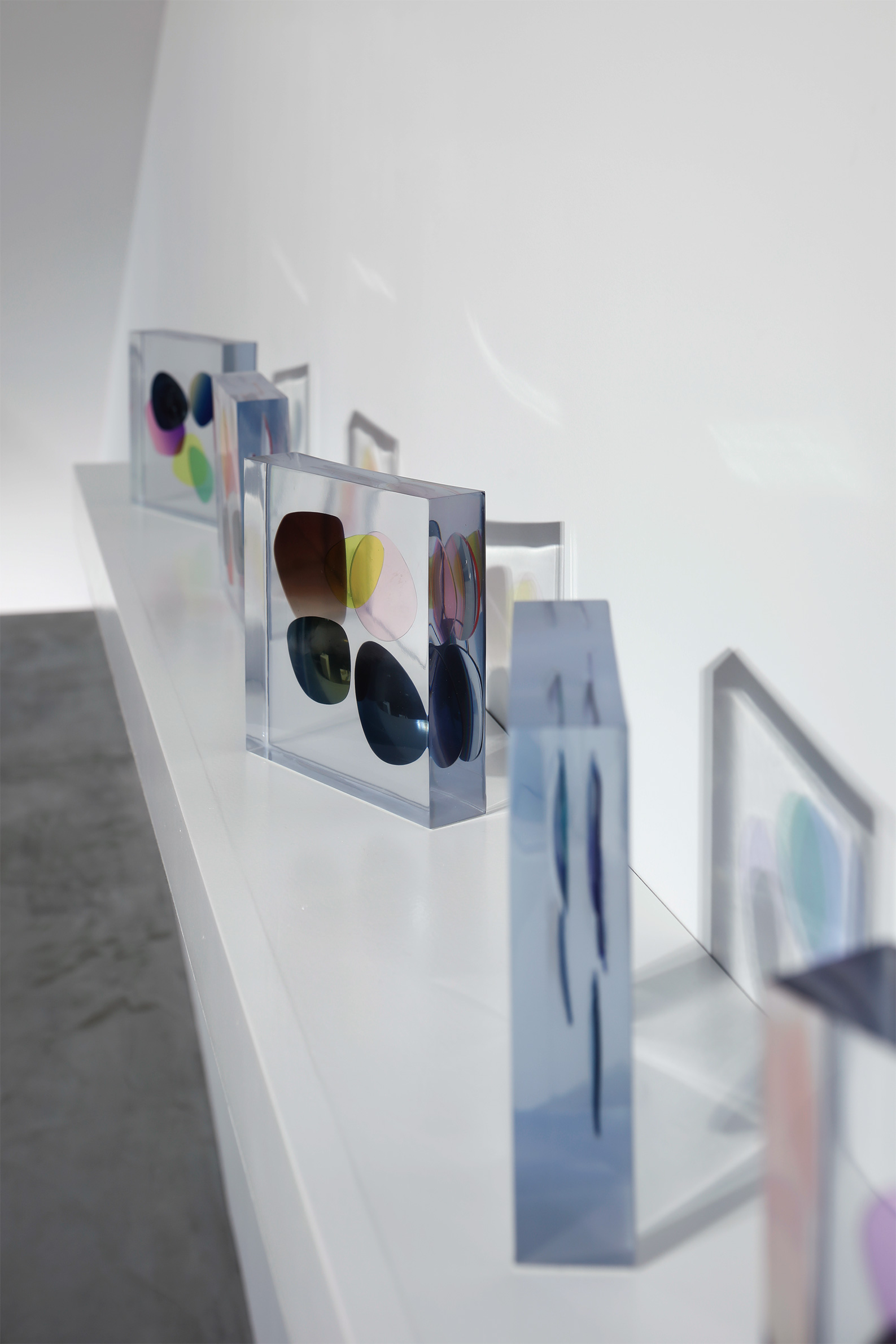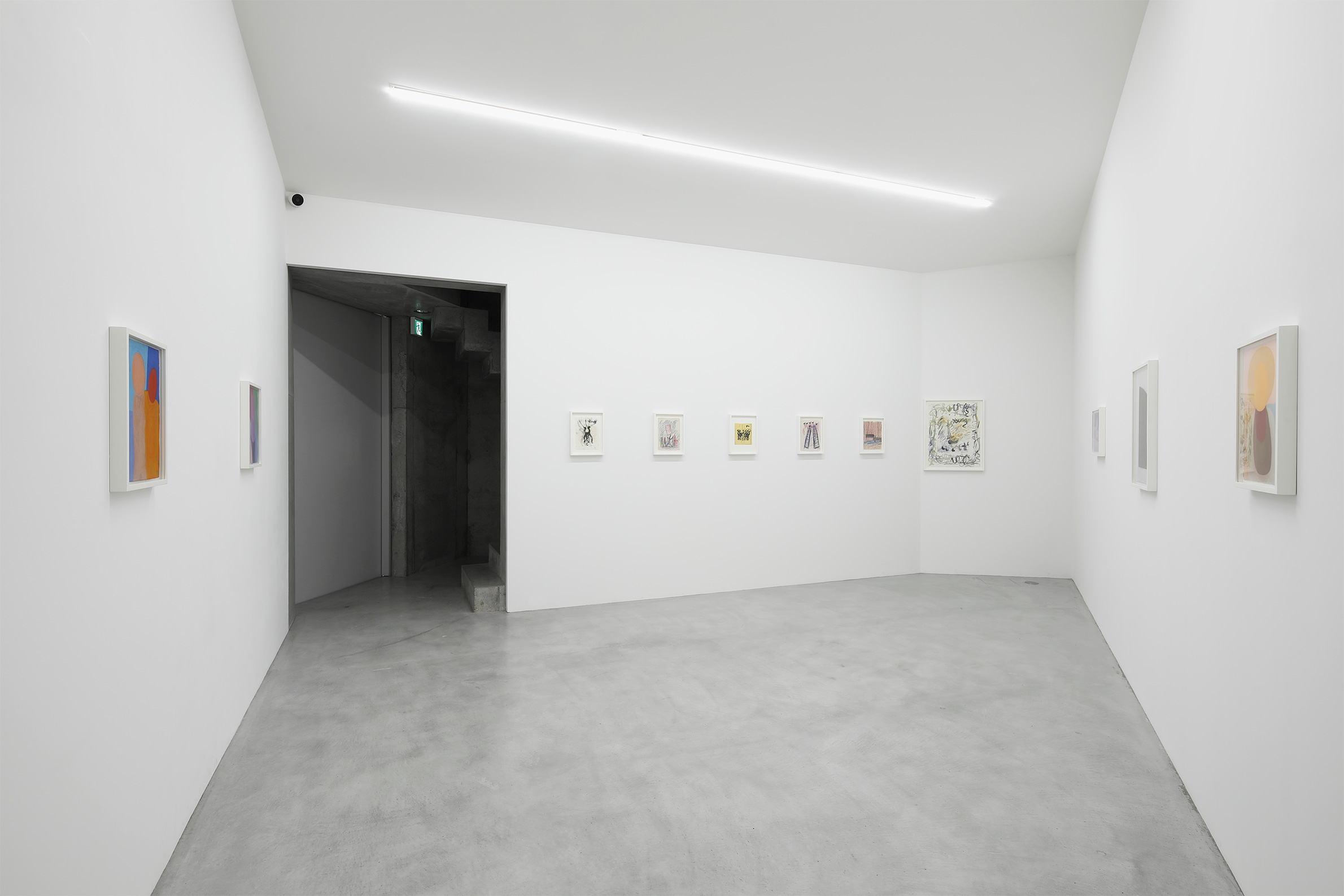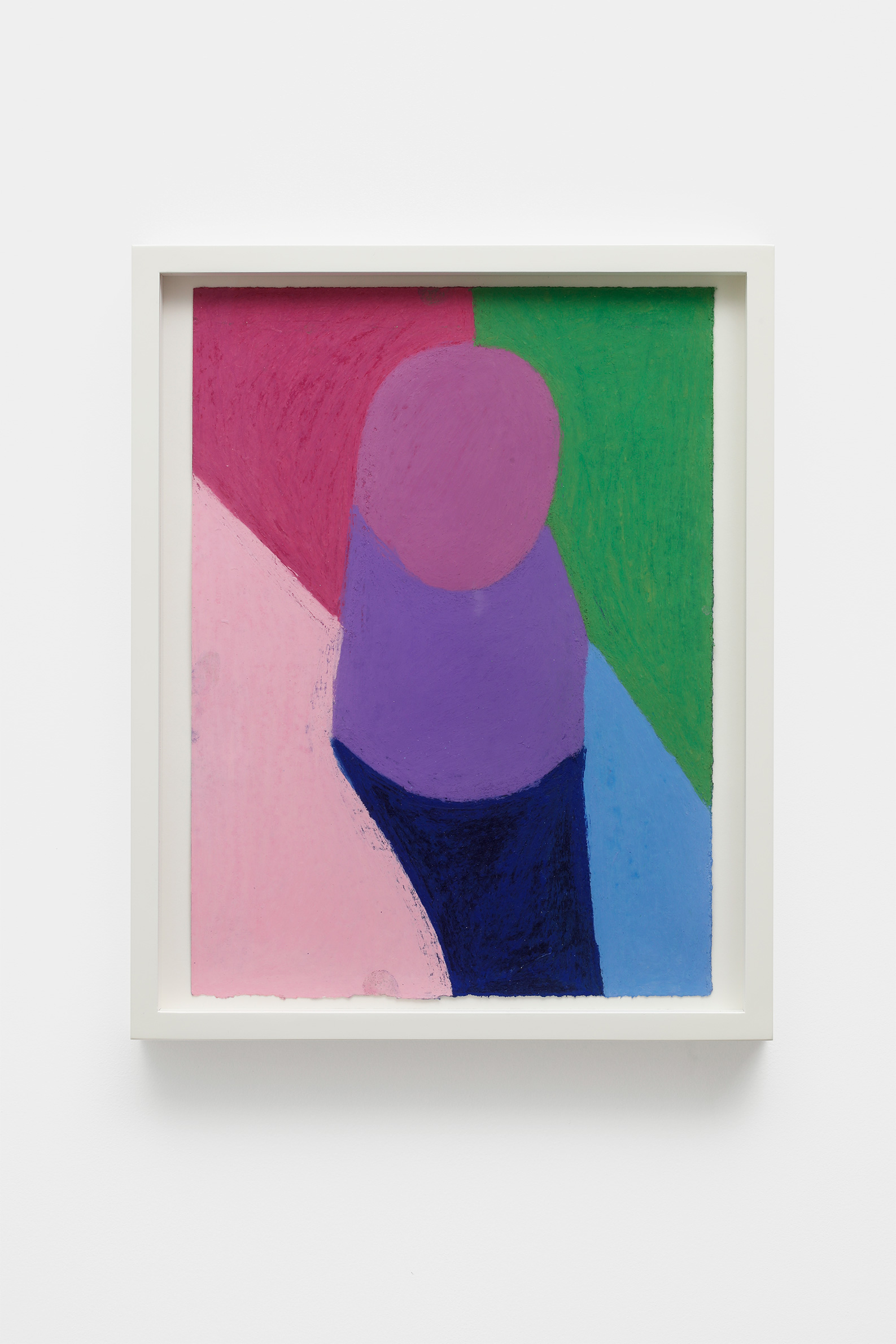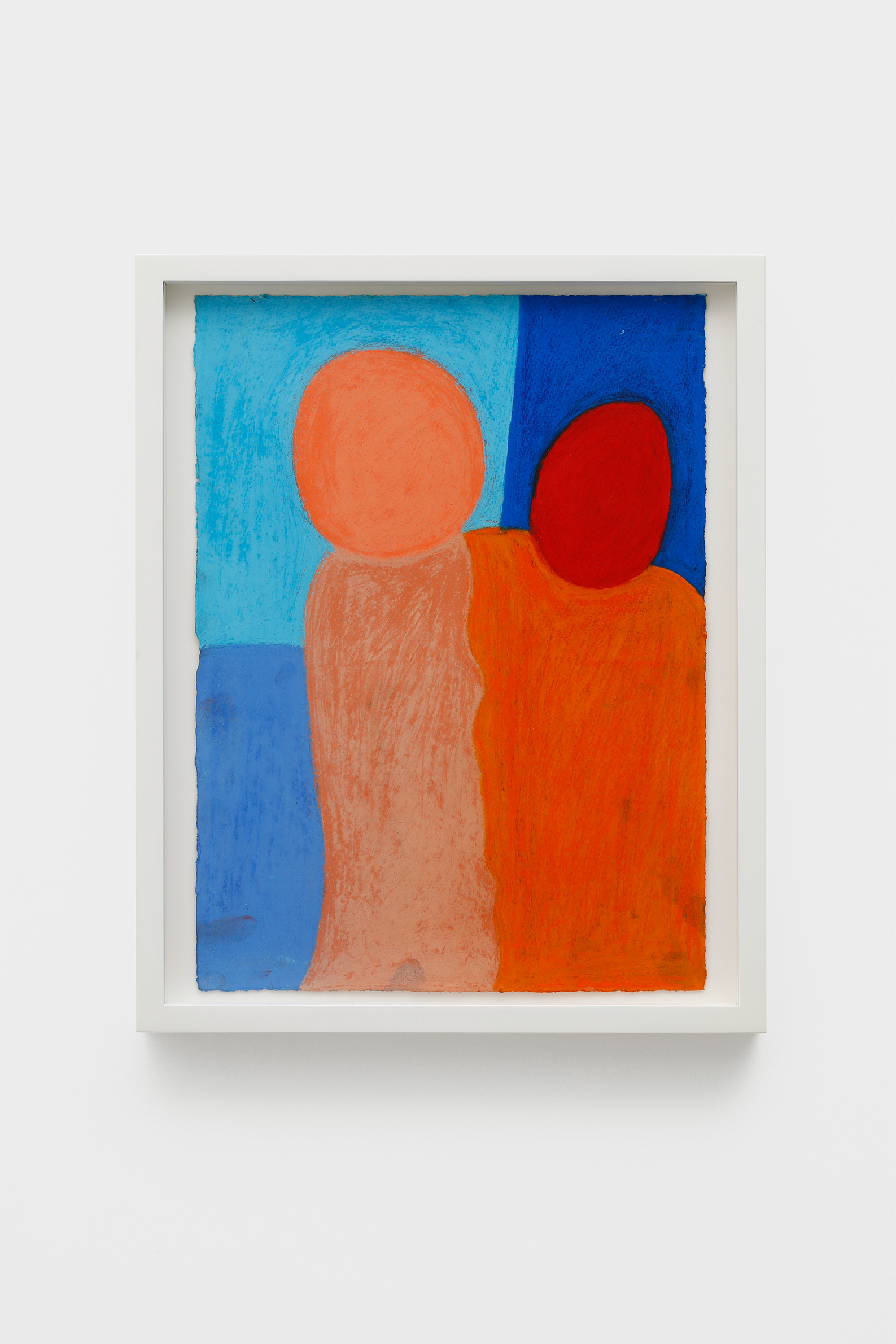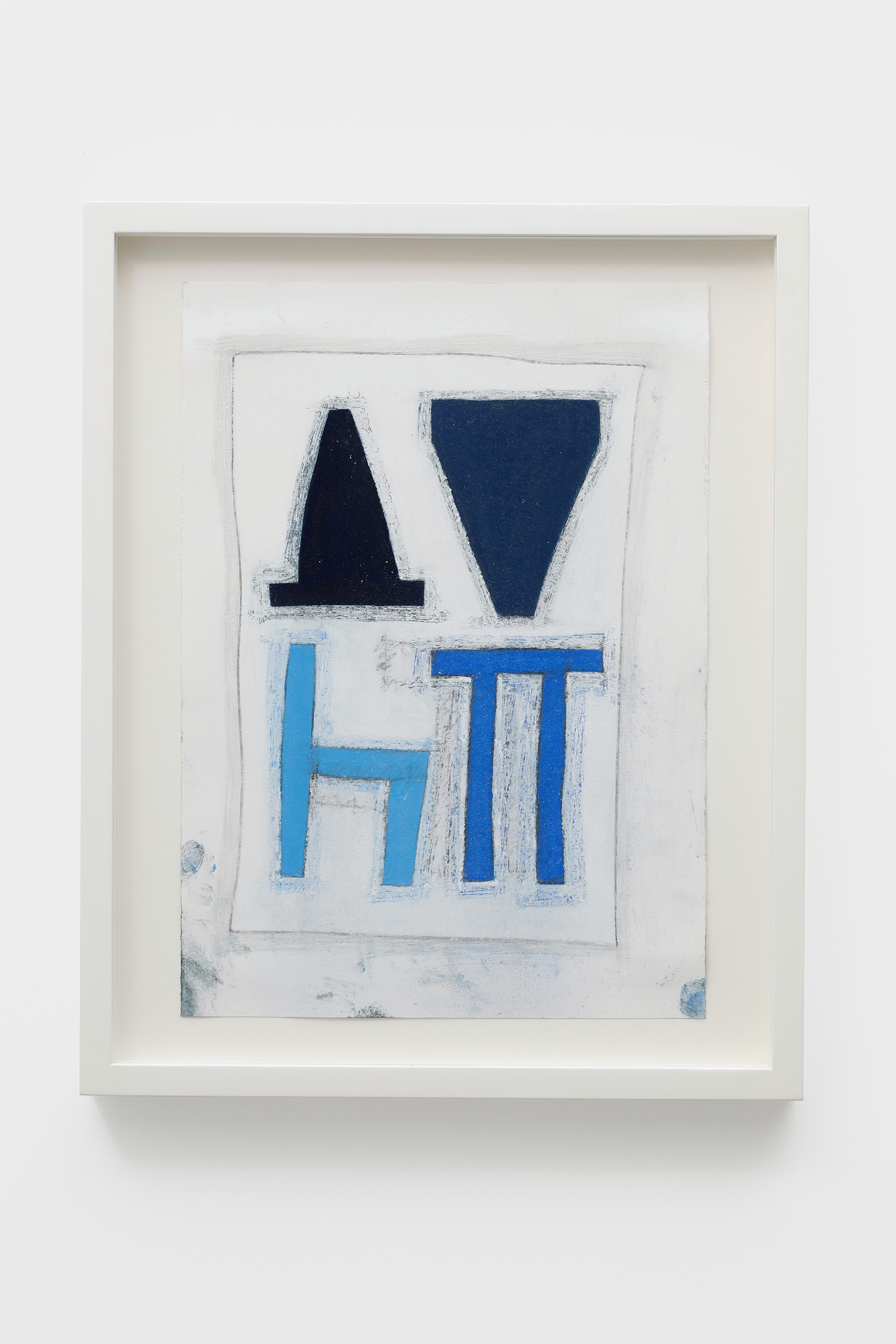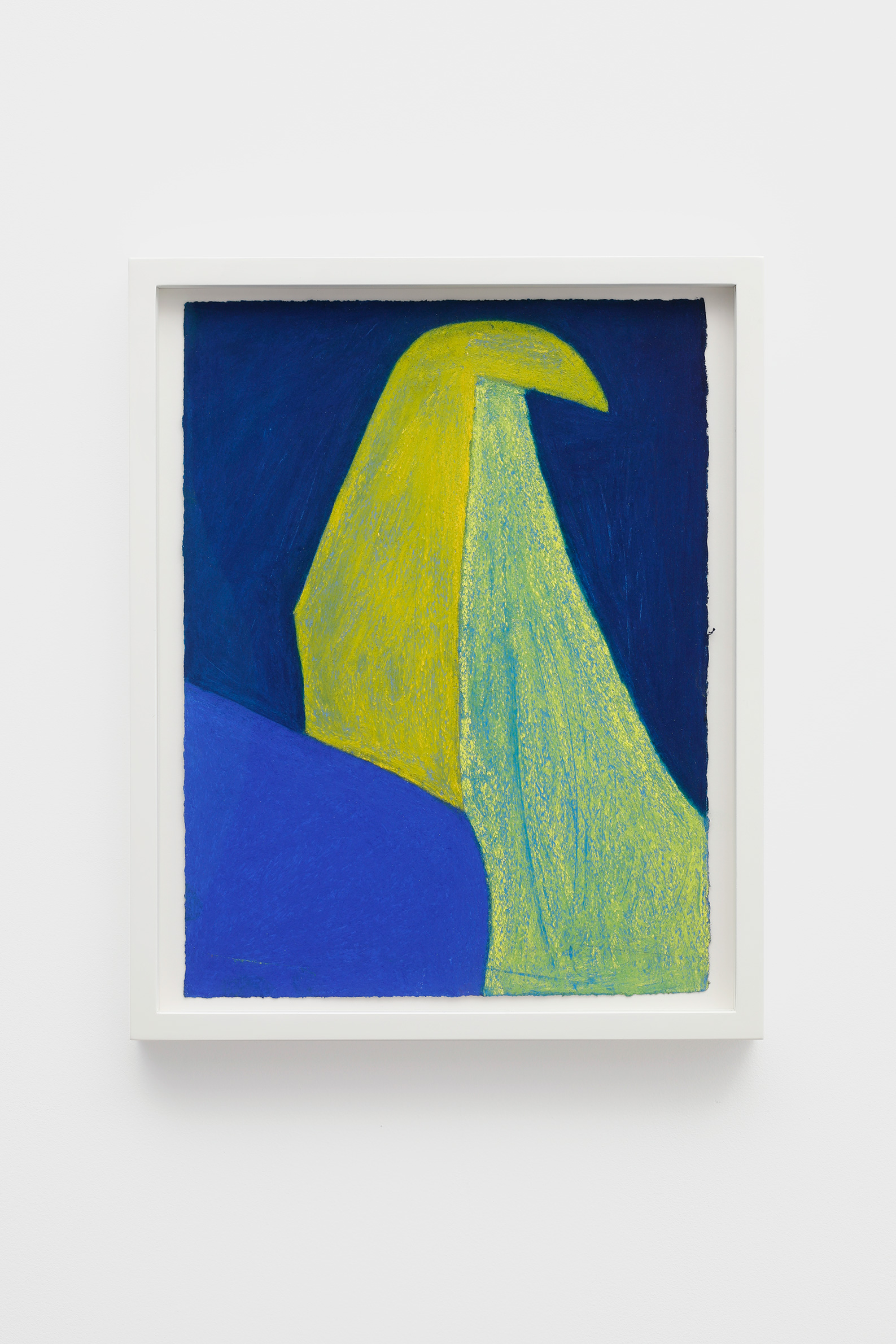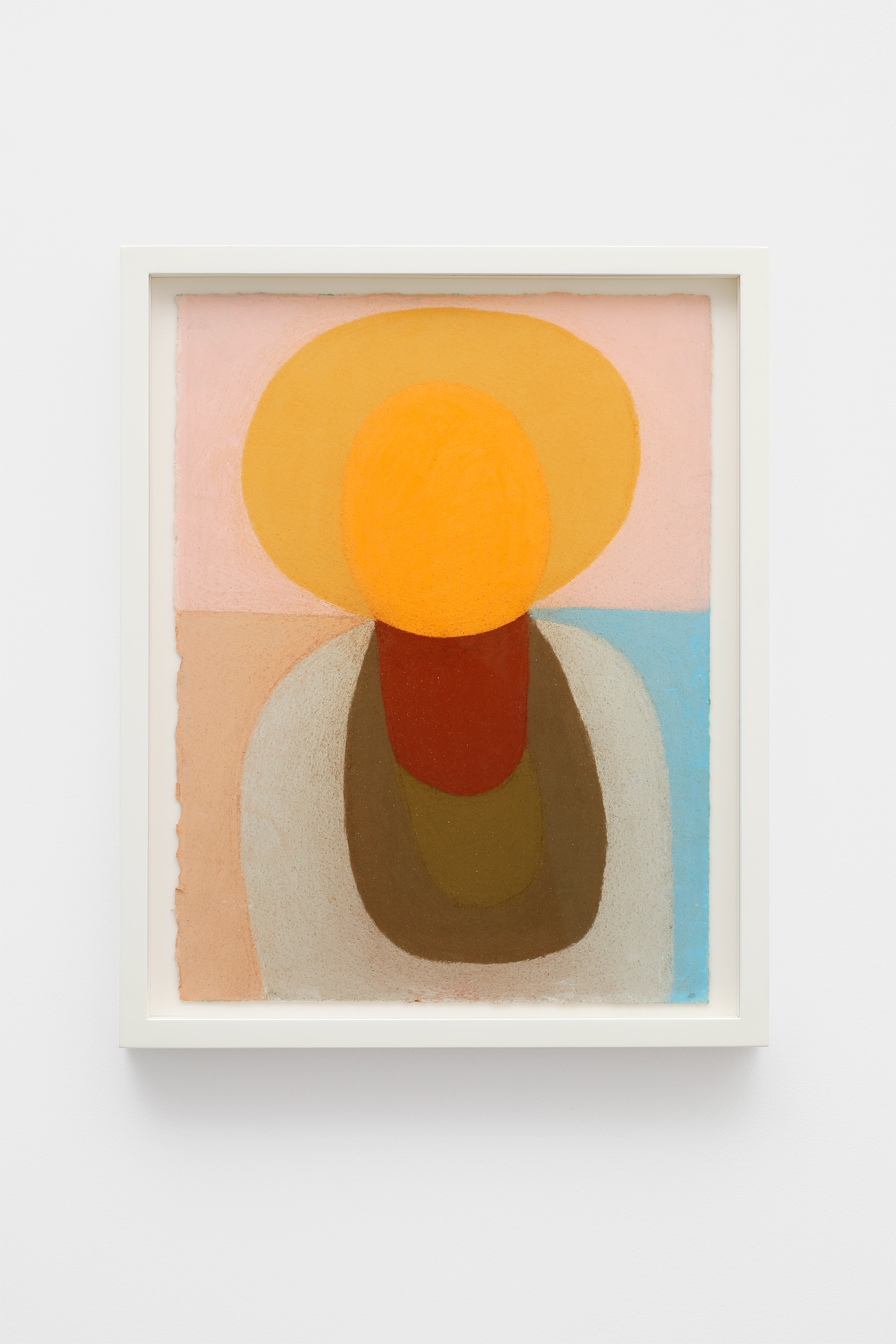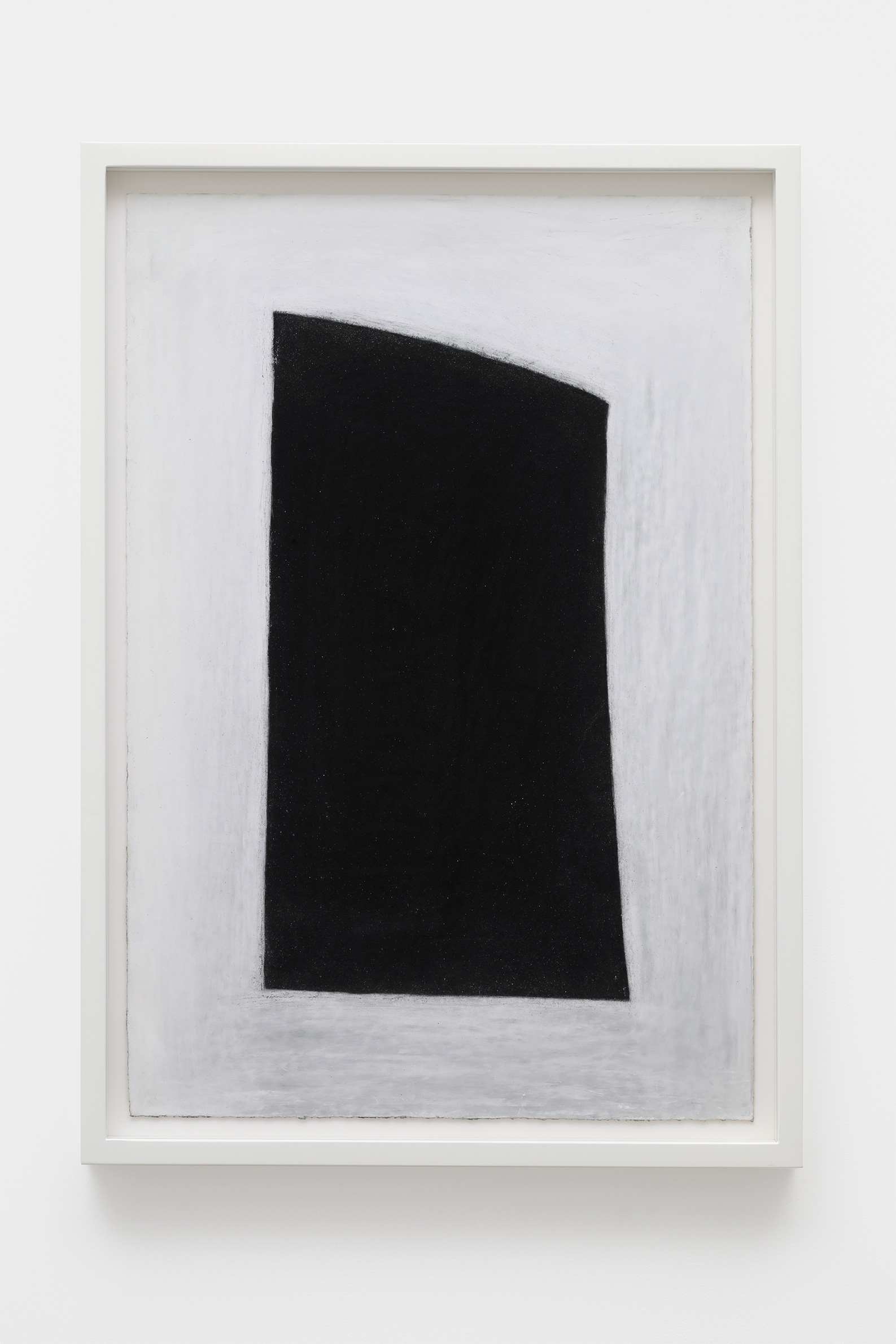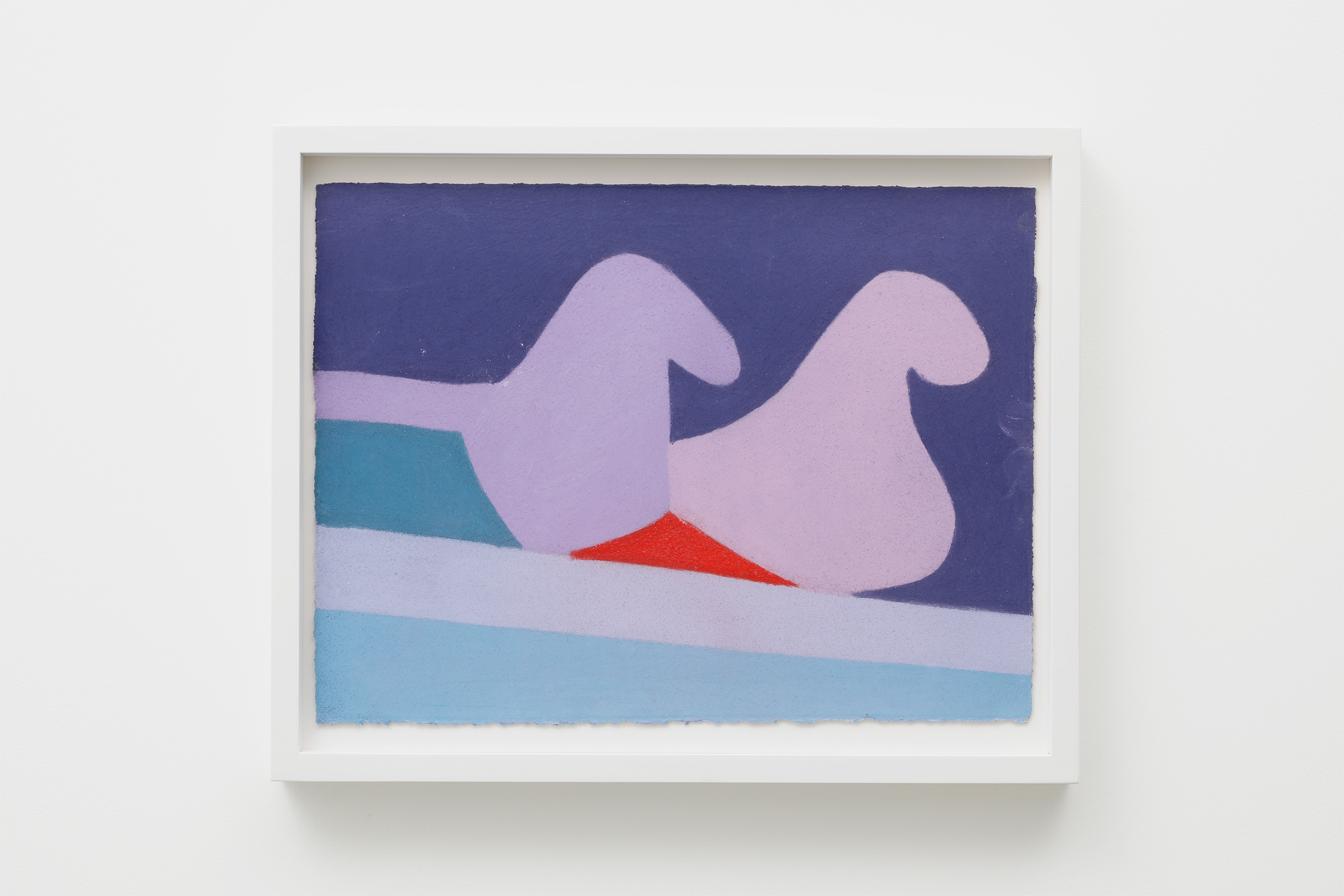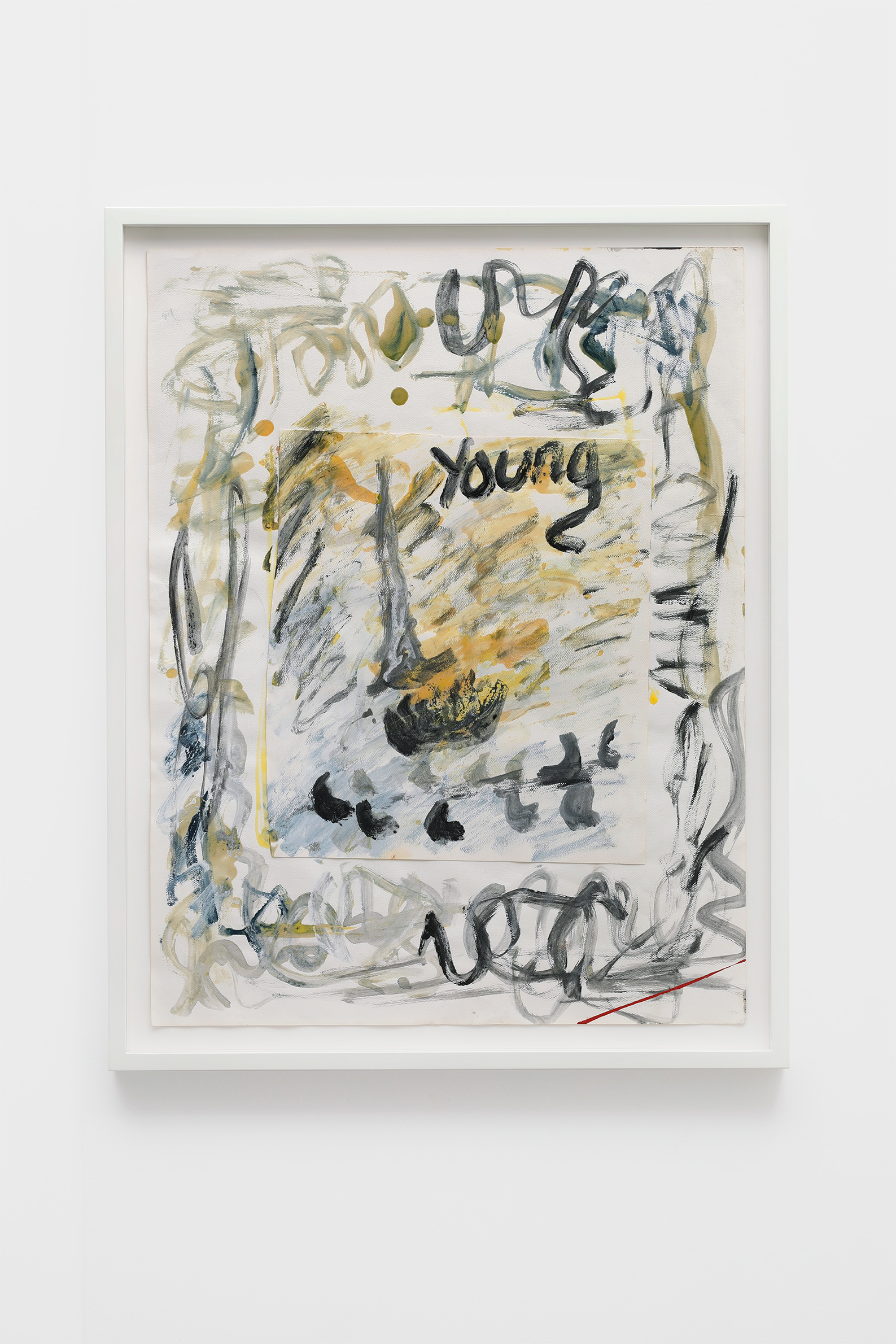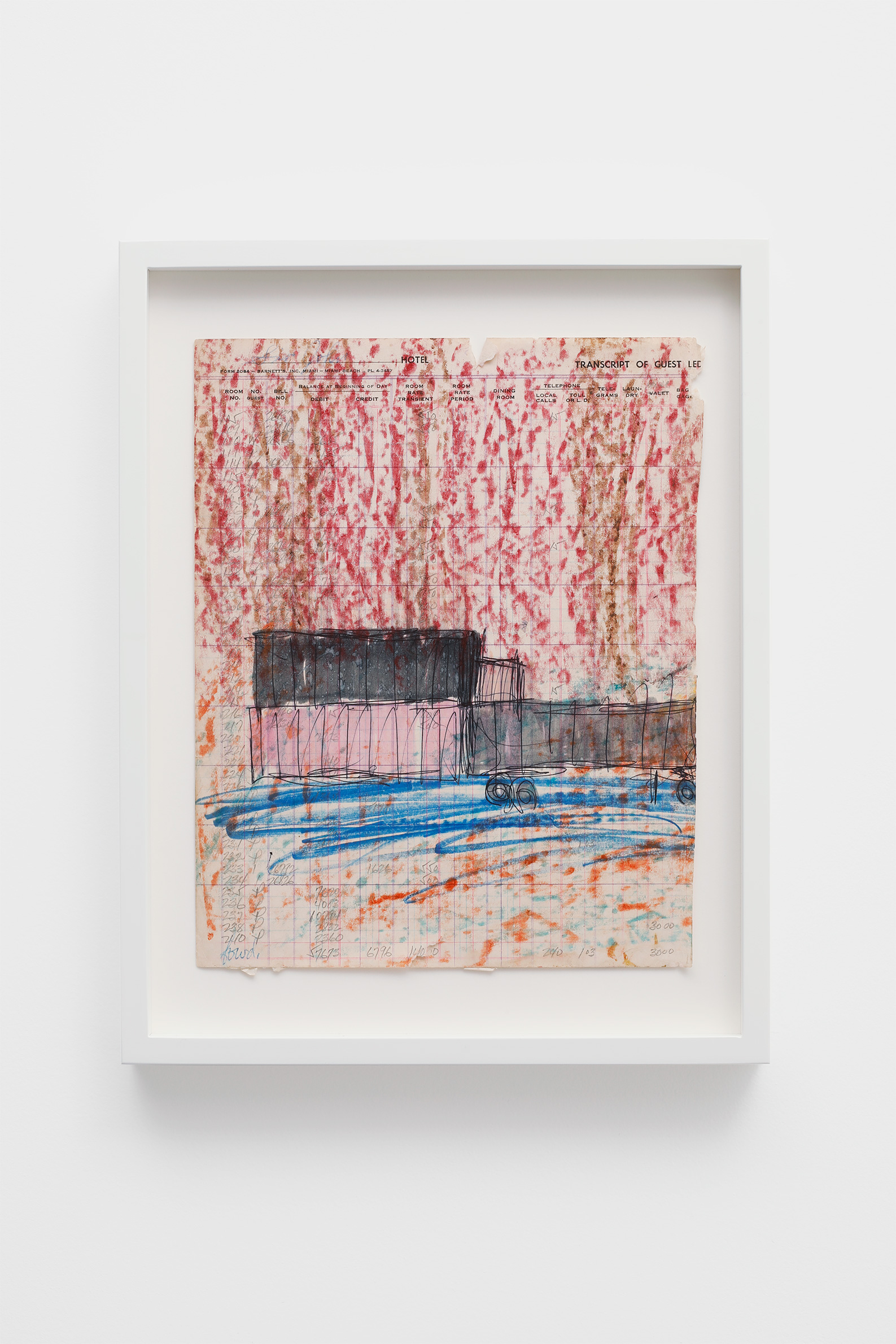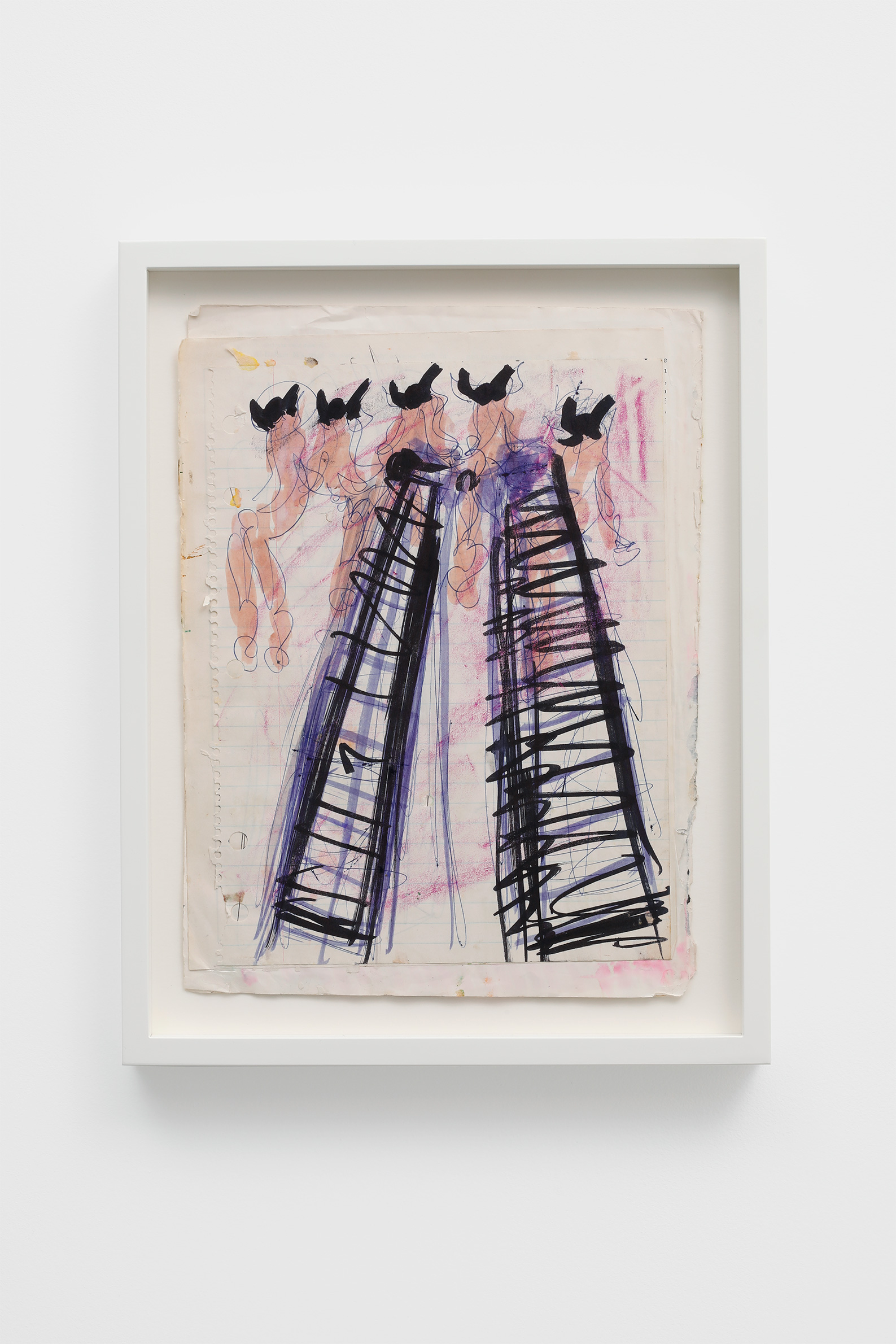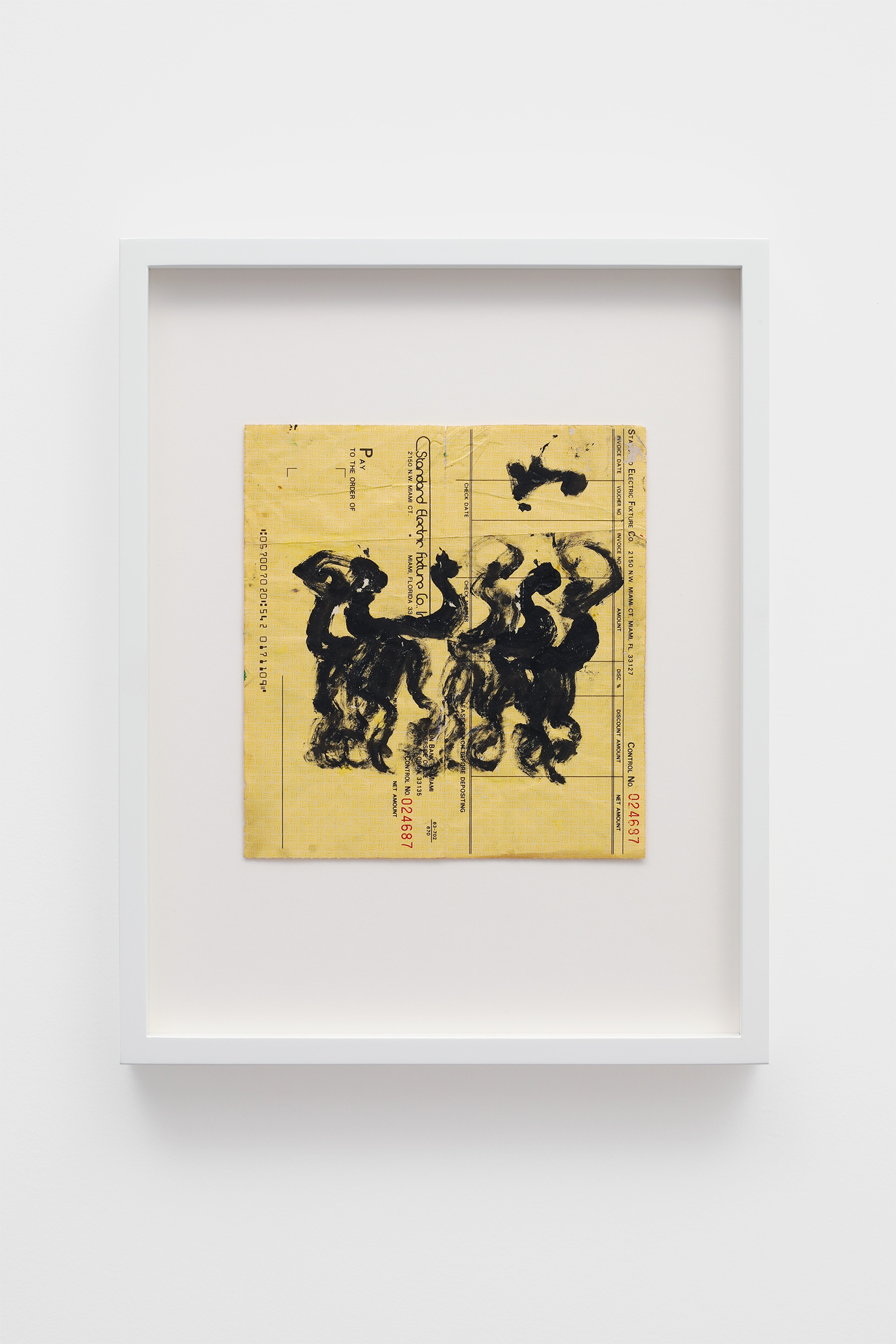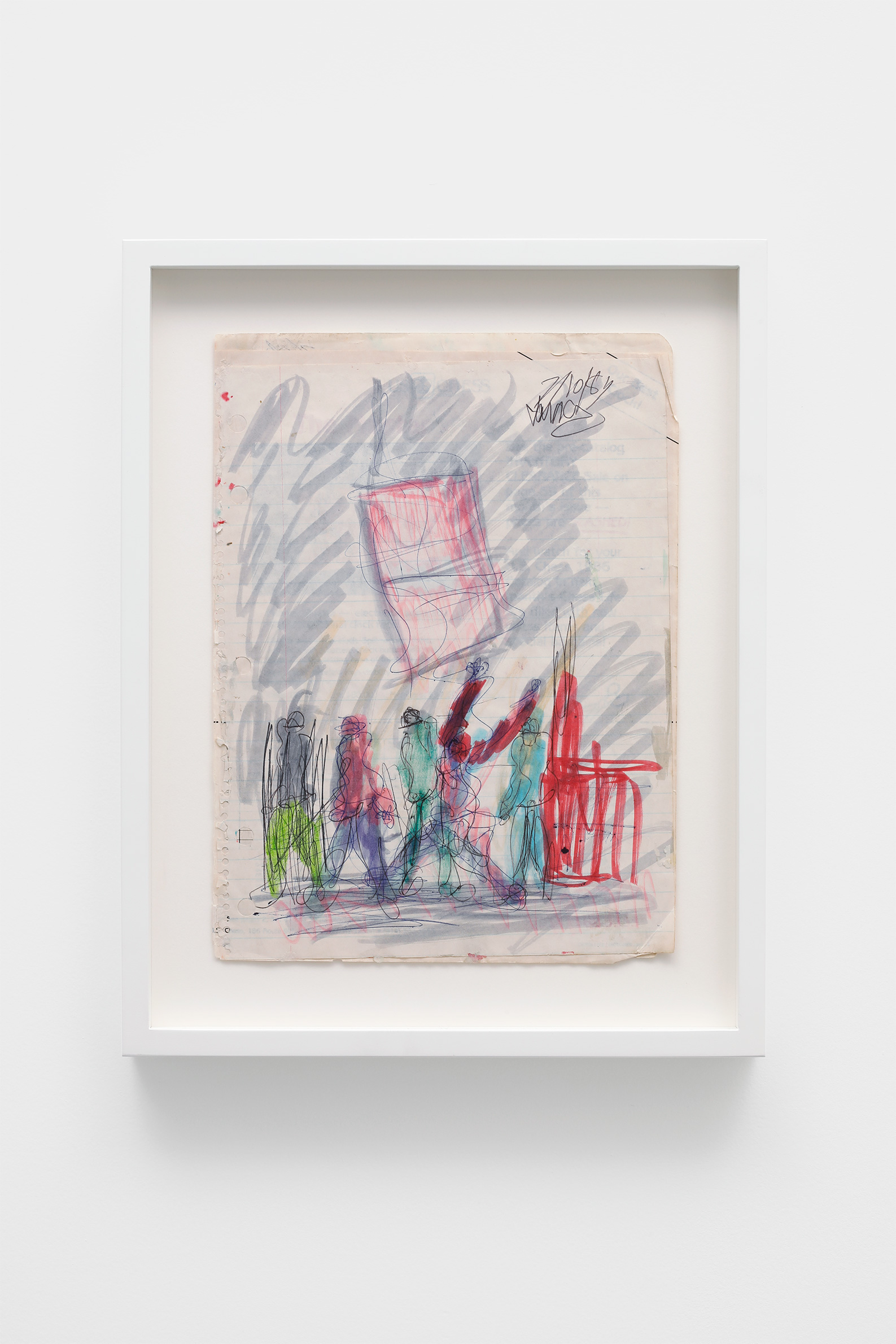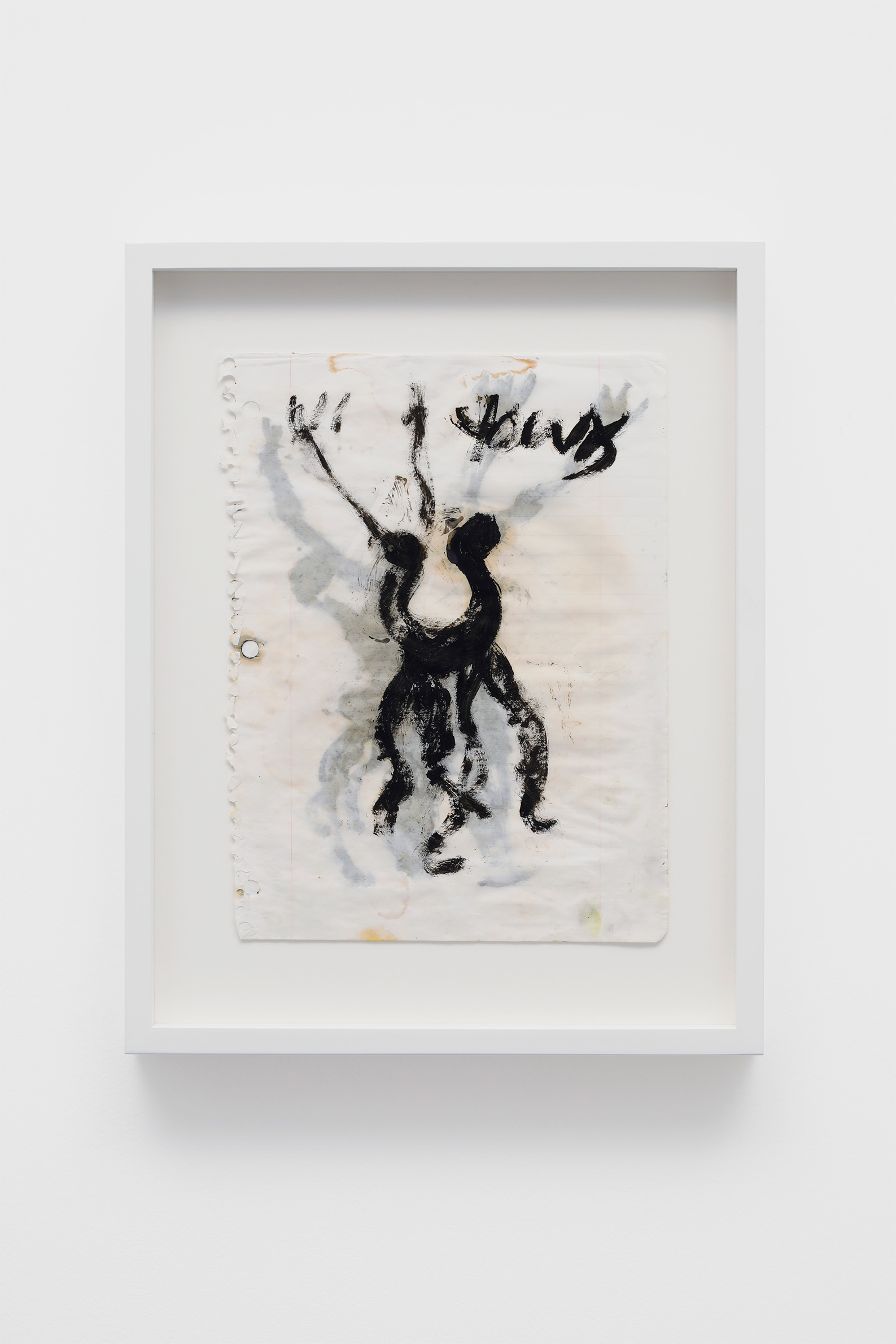Julian Martin
Budgerigar, 2022
Pastel on paper
38 x 28 cm (15 x 11 in.)
Julian Martin
Anne Hathaway, Red Carpet, 2022
Pastel on paper
38 x 28 cm (15 x 11 in.)
Julian Martin
Untitled, 2010
Pastel on paper
34.9 × 25.1 cm (13 3 ⁄ 4 x 9 7 ⁄ 8 in.)
Julian Martin
Untitled, 2018
Pastel on paper
38.1 × 28.6 cm (15 x 11 1 ⁄ 4 in.)
Julian Martin
Penny, 2019
Pastel on paper
38 x 28 cm (15 x 11 in.)
Julian Martin
Untitled, 2016
Pastel on paper
56 x 38 cm (22 x 14 3/4 in.)
Julian Martin
Untitled, 2021
Pastel on paper
28 x 38 cm (11 x 15 in.)
Purvis Young
Untitled, ca. 1980 – 1999
Paint on paper
65.4 x 50.2 cm (25 3/4 x 19 3/4 in.)
Purvis Young
Untitled, ca. 1965
Paint and ink on paper
28 x 24.13 cm (11 x 9 1/2 in.)
Purvis Young
Untitled, ca. 1980 – 1999
Ink on paper
29 x 20 cm (11 2/5 x 7 4/5 in.)
Purvis Young
Untitled, ca. 1980 – 1999
Paint on paper
29 x 20 cm (11 2/5 x 7 4/5 in.)
Purvis Young
Untitled, ca. 1980 – 1999
Ink on paper
29 x 20 cm (11 2/5 x 7 4/5 in.)
Purvis Young
Untitled, ca. 1980 – 1999
Ink on paper
29 x 20 cm (11 2/5 x 7 4/5 in.)
OSCAAR MOULIGNE is pleased to announce Loves Comes in Colors featuring the work of Julian Martin and Purvis Young. The exhibition, on view from December 26, 2024 until March 1, 2025, brings together a selection of works on paper by two distinguished self-taught artists who both employ a language of symbolic imagery to create narratives reflecting observations of daily life and emotional connections to the people and world around them. The title of the exhibition is taken from a suite of multiples by artist Jim Lambie, concurrently on view and shown for the first time.
Julian Martin (b. 1969) is an Australian artist known for his vibrant pastel drawings depicting still-life, portraiture, and biomorphic abstraction. Diagnosed with autism at the early age of two years old, Martin received no formal art training but has been attending the Arts Project Australia center—a Melbourne-based art organization for artists with intellectual disabilities—since 1989 and continues to work there today.
For his drawings, Martin works from photographs and physical objects to create compositions with vivid colors and rich textures through a unique and methodical exploration of form and expression. Pastel marks, applied with a soft but highly controlled and precise touch, saturate the surface with a velvet-like appearance while simultaneously emphasizing the bold forms of his subject, which include figurative images of celebrities, politicians, sports stars, and self-portraits. Everyday tools and objects, also primary sources of imagery, are typically reduced and flattened, and shapes are abstracted to become signs and symbols articulating an elegant geometric formalism.
Purvis Young (1943–2010) was an American artist known for his expressive drawings, paintings, and collages that addressed social issues and drew inspiration from urban subculture, particularly from the neighborhood of Overtown in Miami, Florida, where he lived and worked. Young’s artistic practice embodied a fight for social justice, hope for community, immigration, and otherness, as well as the fragile balance between life and death. An astute observer of street life in his neighborhood (formerly known as the “Harlem of the South”), he expressed human joys and struggles through depictions of the people and city that surrounded him, and of his personal experiences as a Black man in the American South.
Young created works utilizing found material and objects, namely items he discovered in his neighborhood such as discarded wood, carpet scraps, fabric pieces, tabletops, tossed-out books and paper scavenged from trash, which he painted on, or nailed or glued together to produce assemblages. He used an array of motifs and powerful symbols in his work: horses denoted the concept of freedom; grids and padlocks were emblems of imprisonment and struggle; eyes were surveillance by authority and the establishment. Young also depicted people with raised arms to express faith, hope, and redemption. Pregnant women represented future salvation. Boats, trucks, trains, and railroad tracks suggested movement, migration, escape, and opportunity, while angels and large floating heads signified good people and the possibility of goodness in a strife-ridden world.
Young learned to draw from his uncle at a very young age but never received a formal art education. During his period of incarceration as a teenager for breaking and entering, he began to draw prolifically and study the works of master painters such Gauguin, Van Gogh, El Greco, and Rembrandt. Following his release from prison, Young continued his self-education in art history, spending hours in public libraries and immersing himself in art books. He also began executing thousands of small drawings and in 1971, settled in the Overtown district. Young was not only inspired by street life but also by historical documentaries, and expressed a desire to respond to the tragedies he witnessed on television about the Vietnam War. In addition, he was affected by the proliferation of activist murals in the late 1960s, such as the Wall of Respect mural executed by members of the Black Arts movement in Chicago, and in 1972 decided to create a mural of his own, covering a wall of vacant storefronts (former bakeries) on Overtown’s Goodbread Alley with a multitude of paintings executed on materials taken from the streets to create a massive panorama of images. Young’s mural received a great amount of local media attention and by the 1990s, his reputation had reached a national level, further enhanced in 1999 when approximately 3,000 pieces in Young’s studio were acquired by the Rubell Family Collection in Miami.
Young’s highly personal iconography can be described as both spiritual and visionary. Through a visceral language of symbolic imagery and painterly handling, Young created complex juxtapositions, not only between geometric and gestural, but between large (heads) and small (figures), flashing colors, and deep blackness. His assemblages exude a raw, emotional quality that reflect an urgency, in Young’s words, “to paint what’s on my mind.”
With innovative styles in the use of color, line, form, and composition, the two artists in the exhibition are linked by an intense energy and desire to share and communicate a unique vision with the world. Together they voice the idea of art as a transformative power and a vehicle for love and enduring hope.
About the Artists
Julian Martin
Julian Martin was born in 1969 and lives and works in Melbourne. He has attended Arts Project Australia in Melbourne since 1988 and has exhibited extensively in Melbourne since 1990. He has also shown at Fleisher/Ollman (Philadelphia), Museum of Everything (London), MADMusée (Belgium), Phyllis Kind Gallery (NYC), Jack Fischer Gallery (San Francisco), among others. In 2019, his work was featured in the exhibition Nicolas Party: Pastel, The FLAG Art Foundation, New York, NY. His work is in public collections including the National Gallery of Victoria, Deakin University, Monash University Museum of Art, and the City of Melbourne (all in Melbourne, Australia); The Museum of Everything, London, UK; Frances Lehman Loeb Art Center, Vassar College, Poughkeepsie, NY, among others. Julian Martin is represented by Arts Project Australia, Melbourne, and Fleisher/Ollman Gallery, Philadelphia, USA.
Purvis Young
Purvis Young was born in Liberty City, Florida in 1943 and spent most of his artistic life in Overtown, both now in the Miami metropolis area. His work has been featured in numerous group exhibitions devoted to outsider art, folk art, and the work of African American artists from the American South, among them History Refused to Die: Highlights From the Souls Grown Deep Foundation Gift, held at The Metropolitan Museum of Art in New York (2018), and Revelations, organized by the Fine Arts Museums of San Francisco (2017). Recent solo exhibitions include Purvis Young, held at the Rubell Family Collection during 2018–2019. Young’s work can be found in major public collections throughout the United States, including the American Folk Art Museum, New York; the High Museum of Art, Atlanta; the Philadelphia Museum of Art; the Smithsonian American Art Museum, Washington, D.C.; the Studio Museum of Harlem, New York; and the Virginia Museum of Fine Arts, Richmond.
OSCAAR MOULIGNEはこのたびジュリアン・マーティンとパーヴィス・ヤングの二人展「Loves Comes in Colors」を2024年12月26日から2025年3月1日まで開催いたします。日常生活からの観察や、周りの人々や世界とのつながりを感情的に反映し、象徴的なイメージを用いて描く二人のセルフトート(独習)アーティストのドローイング作品を展示いたします。展覧会のタイトルは、同時に展示され、初公開となるジム・ランビーによるマルチブル作品のタイトルから来ています。
ジュリアン・マーティン(1969年生)は、静物画、肖像画、バイオモーフィック(生命体的)抽象画を描いた鮮やかなパステル作品で知られるオーストラリアのアーティストです。2歳のときに自閉症と診断され、正式な美術教育を受けることはありませんでしたが、1989年から現在も通う知的障害を持つアーティストのためのメルボルン拠点の芸術団体「Arts Project Australia」で活動しています。
マーティンの作品は、写真や実物を基に構成され、鮮やかな色彩と豊かな質感を特徴としています。独特で綿密な手法で、柔らかいタッチながら制御されたパステルの筆致が、ベルベットのような質感をもたらし、著名人や政治家、スポーツ選手、さらには自画像といった被写体の大胆な形状を際立たせています。日常的な道具や物も主なイメージの源泉で、それらは簡略化され、形が記号やシンボルとして抽象化されています。
パービス・ヤング(1943年–2010年)は、社会問題に取り組む表現力豊かなドローイング、ペインティング、コラージュで知られるアメリカのアーティストです。ヤングが生涯を過ごしたフロリダ州マイアミのオーバータウン地区(かつて「南部のハーレム」と呼ばれた)の都市文化に触発された作品は、彼の社会正義への闘い、コミュニティへの希望、移民や異質性、生と死の間の微妙な関係性を表現しています。近隣で捨てられた木材やカーペットの切れ端、布、テーブルトップ、古本、廃棄された紙などの素材を拾い、それらをペインティングやアッサンブラージュの作品に使用していました。作品には、自由を象徴する馬、投獄と闘争を示す格子や錠、権力や体制による監視を意味する目など、多数のモチーフや力強いシンボルが登場します。また、信仰、希望、救済を表現するために腕を上げた人物、未来の救済を象徴する妊婦、移動や移民、脱出、可能性を示す船、トラック、列車、鉄道、そして困難な世界における善良さや可能性を象徴する天使や大きな浮かぶ頭部が描かれています。
ヤングは幼い頃から叔父に絵を教わりましたが、正式な美術教育を受けることはありませんでした。10代の頃、住居侵入罪で服役中に、絵を描き始め、ゴーギャン、ゴッホ、エル・グレコ、レンブラントなどの巨匠の作品を研究しました。釈放後も、美術史の独学を続け、公共図書館で長時間過ごし、美術書に没頭しました。また、何千枚もの小さな絵を描き始め、1971年にオーバータウン地区に定住しました。ヤングは街中の日常だけでなく、歴史的なドキュメンタリーからもインスピレーションを受け、ベトナム戦争についてテレビで目撃した悲劇に応答したいという願望も表明しました。さらに、1960年代後半に広まった活動家による壁画、特にシカゴのブラックアート運動のメンバーによる「ウォール・オブ・リスペクト」から影響を受け、1972年には自身の壁画を制作しました。オーバータウンのグッドブレッド・アレイにある空き店舗の壁を、街で見つけた素材を用いた無数のペインティングで覆い、大規模なパノラマ作品を作り上げました。この壁画は地元メディアから大きな注目を集め、1990年代にはアメリカ全体での評価を受けるようになりました。1999年にはヤングのスタジオにあった約3,000点の作品がマイアミのルベル・ファミリー・コレクションに収蔵されたことで、彼の名声はさらに高まりました。
ヤングの極めて個人的な図像学は、霊的であり、かつ先見的であるといえます。象徴的なイメージと絵画的表現の直接的な言語を通じて、ヤングは幾何学的とジェスチャー的、頭部の大きさと人物の小ささ、鮮やかな色彩と深い黒さなど、複雑な対比を作り出しました。アッサンブラージュは、生々しい感情を呼び起こし、ヤング自身の言葉「心にあるものを描きたい」という切実な欲求を反映しています。
色、線、形、構図における革新的なスタイルを通じて、二人のアーティストは、それぞれ独自のビジョンを世界に伝えるという強烈なエネルギーを共有しています。共に、芸術が持つ変革の力と、愛と希望の媒介としての役割を訴えています。
About the artists
ジュリアン・マーティン
ジュリアン・マーティンは1969年に生まれ、メルボルンで活動しています。1988年からメルボルンの「Arts Project Australia」に通い始め、1990年以降メルボルンを中心に多くの展覧会に出展しています。また、フィラデルフィアのFleisher/Ollman、ロンドンのMuseum of Everything、ベルギーのMADMusée、ニューヨークのPhyllis Kind Gallery、サンフランシスコのJack Fischer Galleryなどで展示を行っています。2019年には、ニューヨークのFLAG Art Foundationで開催された「Nicolas Party: Pastel」展に出展されました。以下のようなパブリック・コレクションに作品が収蔵されています:ビクトリア国立美術館、ディーキン大学、モナシュ大学美術館、メルボルン市(すべてメルボルン)、Museum of Everything(ロンドン)、フランシス・レーマン・ローブ美術センター(ニューヨーク州ヴァッサーカレッジ)など。ジュリアン・マーティンは、メルボルンのArts Project Australiaと、アメリカ・フィラデルフィアのFleisher/Ollman Galleryに所属しています。
パーヴィス・ヤング
パーヴィス・ヤングは1943年にフロリダ州リバティシティで生まれ、主にマイアミ都市圏のオーバータウン地区で活動しました。彼の作品は、アウトサイダーアート、フォークアート、アメリカ南部のアフリカ系アメリカ人アーティストの作品に特化した数々のグループ展で取り上げられています。その中には、2018年にニューヨークのメトロポリタン美術館で開催された「History Refused to Die: Highlights From the Souls Grown Deep Foundation Gift」展や、2017年にサンフランシスコ美術館で開催された「Revelations」展が含まれます。近年の個展には、2018年から2019年にかけてルベル・ファミリー・コレクションで開催された「Purvis Young」展があります。アメリカン・フォークアート美術館(ニューヨーク)、ハイ美術館(アトランタ)、フィラデルフィア美術館、スミソニアン・アメリカンアート美術館(ワシントンD.C.)、ハーレム美術館(ニューヨーク)、バージニア美術館(リッチモンド)など、アメリカの主要なパブリック・コレクションの数多く収蔵されています。

